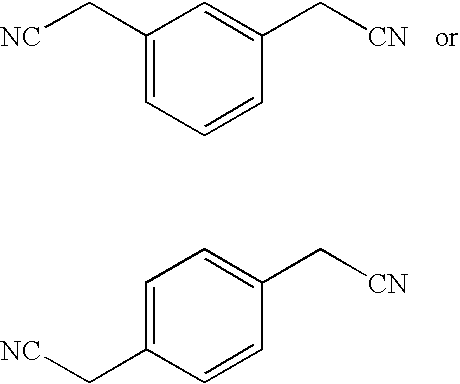Nonaqueous electrolyte for lithium secondary battery and lithium secondary battery using the same
- Summary
- Abstract
- Description
- Claims
- Application Information
AI Technical Summary
Benefits of technology
Problems solved by technology
Method used
Image
Examples
example 1
[0062]LiCoO2 as a positive electrode active material, polyvinylidene fluoride (PVdF) as a binder, and carbon as a conductive agent were mixed with each other in a weight ratio of 92:4:4 and then, the resultant mixture was dispersed into N-methyl-2-pyrrolidone to manufacture a positive electrode slurry. An Al foil having a thickness of 20 μm was coated with the slurry and then, dried and rolled to manufacture a positive electrode. Artificial graphite as a negative electrode active material, styrene-butadiene rubber as a binder, and carboxymethylcellulose as a thickener were mixed with each other in a weight ratio of 96:2:2 and then, the resultant mixture was dispersed into water to manufacture a negative electrode active material slurry. A Cu foil having a thickness of 15 μm was coated with the slurry and then, dried and rolled to manufacture a negative electrode.
[0063]A film separator formed of polyethylene (PE) with a thickness of 20 μm was interposed between the manufactured elect...
example 2
[0064]EXAMPLE 2 differed from EXAMPLE 1 in that 5 wt % of 1,3-bis(cyanomethyl)benzene was used as the additive.
example 3
[0065]EXAMPLE 3 differed from EXAMPLE 1 in that 2 wt % of 1,4-bis(cyanomethyl)benzene was used as the additive.
PUM
 Login to View More
Login to View More Abstract
Description
Claims
Application Information
 Login to View More
Login to View More - R&D
- Intellectual Property
- Life Sciences
- Materials
- Tech Scout
- Unparalleled Data Quality
- Higher Quality Content
- 60% Fewer Hallucinations
Browse by: Latest US Patents, China's latest patents, Technical Efficacy Thesaurus, Application Domain, Technology Topic, Popular Technical Reports.
© 2025 PatSnap. All rights reserved.Legal|Privacy policy|Modern Slavery Act Transparency Statement|Sitemap|About US| Contact US: help@patsnap.com



